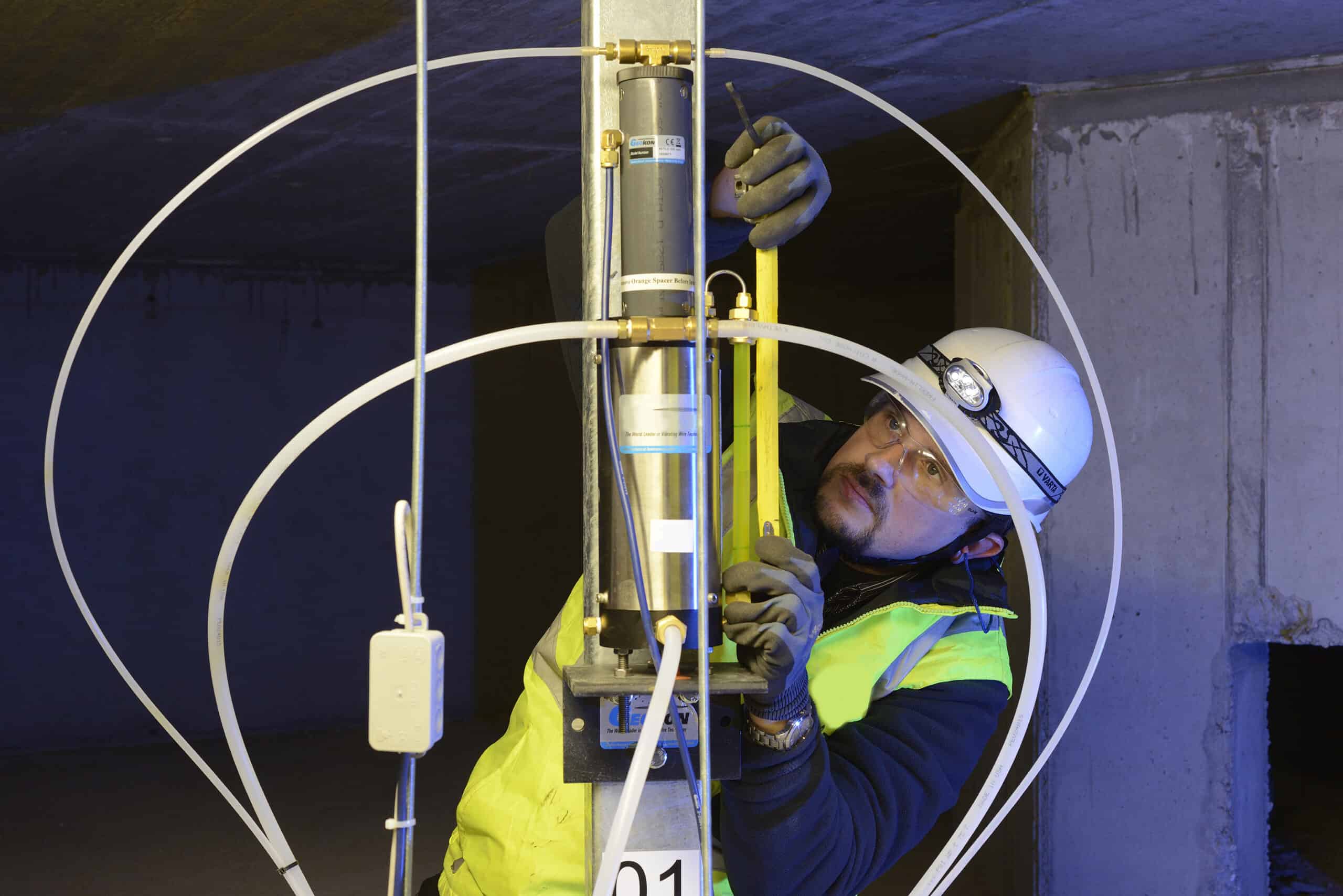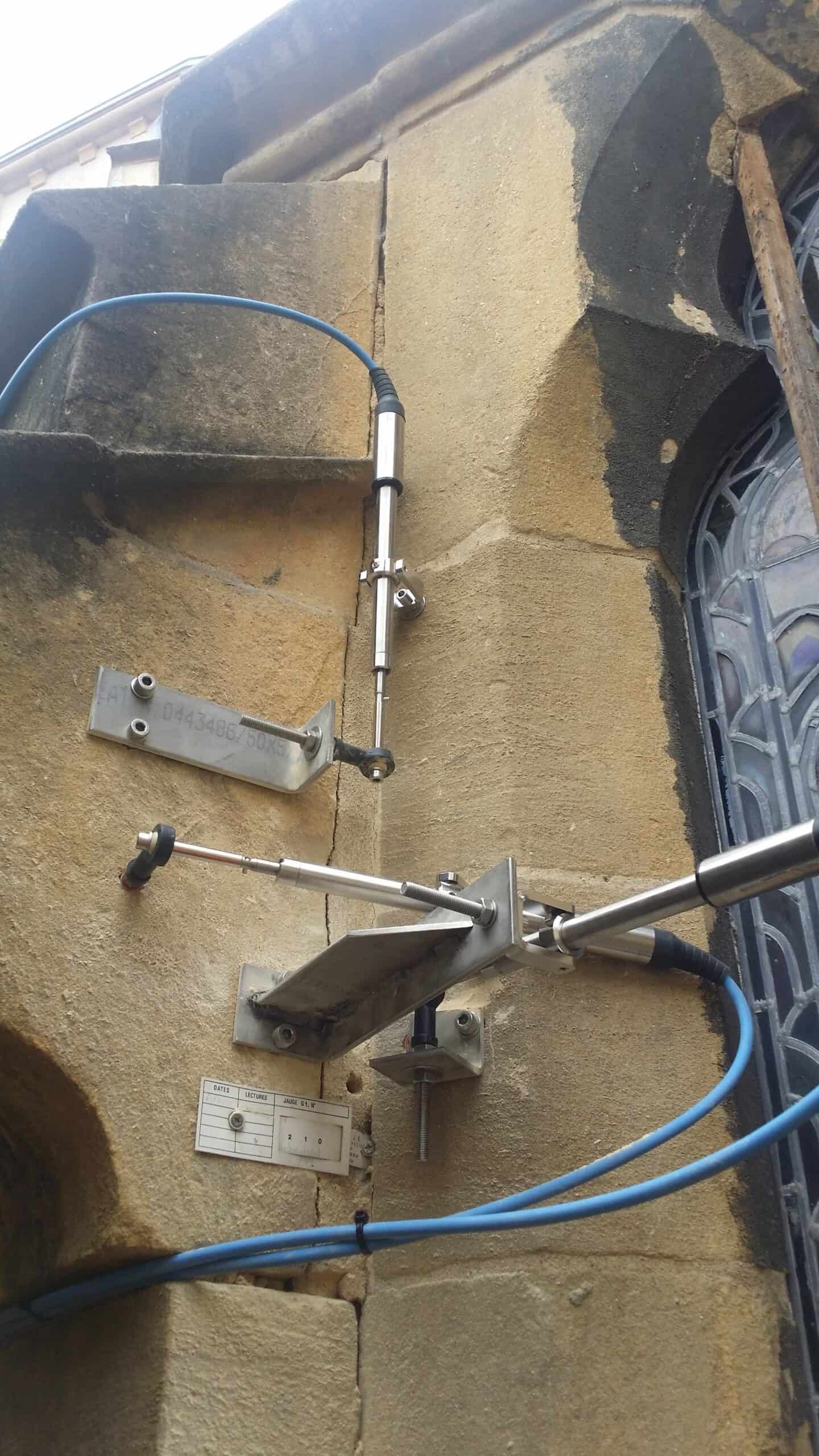Structural monitoring is used to measure structural movements, deformations, stresses and strains in buildings, engineered structures and historic monuments.
The wide range of sensors available means that structural monitoring solutions can be tailored to specific challenges and budgets.
One of the main applications of structual monitoring involves the installation of structural sensors where work is carried out on, or near the structure, to ensure that its integrity is not compromised.
They are also used for long-term structural health monitoring to track the condition of a structure over time and develop tailored maintenance and repar solutions.
Structural monitoring supports the process of structure life cycle management within a wider sustainability policy.
Structural movement and deformation investigation
Some typical applications for structural monitoring:
- Construction work adjacent to sensitive or protectied structures
- Renovation, upgrading, extending or underpinning project
- The sudden appearance of structural issues, such as cracks
- Load increases (increased bridge traffic volumes, a change in machine type in a production plant, a change in the type of warehouse use, creation of additional floors in a building, etc.)
In the context of long-term monitoring (structural health monitoring), the measurements produced by these sensors enable:
- Health monitoring of the structure as the basis for optimisation of maintenance regimes.
- The potential extension of thelifespan for the structure concerned.
- Verification of structural safety and usability following an earthquake, climate event, fire or accident.
- Verification of structural behaviour following an extreme climate event for which the structure was not initially designed.
- Optimisation of designs for similar new structures (thereby reducing their environmental footprint)
Sensor types
The range of structural instrumentation or sensors that can be deployed on site includes:
- Sensors to measure relative or absolute displacement.
- Displacement sensors (crackmeters) enable precise monitoring (from 0.1mm to 0.01mm) of the relative displacement between two fixed points.
- Tiltmeters measure changes in inclination (tilt) of the structure they are fixed to with a typical accuracy of approximately 0.1mm/m.
- Electrolevel Beams do the same as Tiltmeters but over a calibrated length, typically up to 3m maximum.
- Laser distance meters are less accurate than displacement sensors, but allow similar measurements to be made over longer distances.
- Prisms and Retro targets can be measured manully or automatically and are used to measure movement in three dimensions, with prisms providing up to 1mm accuracy in 3D. Mulitple prisms can be used to measure profile change over a structure’s length.
- Hydraulic Settlement Cells and Hydrostatic Settlement Cells, are amongst a range of sensors that are able to measure vertical displacment (heave and settlement).
- Sensors to measure vibration
- Accelerometers have an output proportional to acceleration whilst Geophones have an output proportional to velocity.
- Sensors to measure structural load/stress/strain
- Vibrating Wire strain gauges and fibre optic sensors are relatively economical sensors that are easily welded to steel, or bonded to or embedded in concrete.
- Measurements made using pressure cells enable relative increases in loading to be measured, but not to a very high degree of accuracy.
- Fibre optics enable continuous measurement of temperature and deformation along the full length of the fibre. This solution may be suitable for long-term monitoring on very long linear structures.
Installing structural sensors allows you to:
- Achieve short or long-term monitoring of structural movement and deformation
- Limit interruptions to the operation of a structure following a climate event or accident
- Analyse and understand the behaviour of a structure
- Extend the service life of structures and optimise their maintenance costs
- Manage sustainability and resilience of assets



